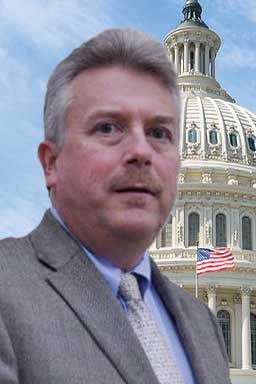Advocacy in action
Everything in Washington, DC, revolves around the budget. It’s been in the news, it seems like forever now. There’s a lot of hype and grandstanding associated with the federal budget but it also has real-world implications for animal agriculture. Agriculture relies on its partnership with the United States Department of Agriculture to conduct research, certify animal health and food safety, and promote products domestically and internationally. I thought it might be worthwhile to spend some time talking about the budgetary process and what it has meant for animal agriculture.
If you spend any time working in DC, the first thing you need to learn is the budgetary cycle. The process as we know it today was actually formalized in 1974. It is literally a year-round process, which can be very confusing when the agencies are working on planning for next year’s budget before Congress has even passed the current year’s budget. For example, as I write this column in April 2013, the federal government is operating under the FY2013 budget, Congress has just received the president’s FY2014 budget for consideration, and the federal agencies will soon begin considering their FY2015 budget requests.
The federal government’s fiscal year is October 1 through September 30. Therefore, the president is supposed to sign all appropriations bills by October 1, but this rarely happens anymore. Thus, to prevent the government from shutting down, Congress passes a series of continuing resolutions to maintain funding at current levels until a formal budget can be signed. But I’m way ahead of myself. Let’s get back to the “process.”
The first thing to understand is that there are two categories of spending in the federal government: mandatory and discretionary. Mandatory spending covers entitlement programs such as Social Security and Medicare and is not subject to annual congressional appropriations legislation. The only way Congress can alter mandatory spending is by changing the eligibility requirements for the program. Discretionary spending requires an annual appropriations bill and is set by the House and Senate Appropriations Committees. Therefore, there is an appropriations bill for each congressional appropriations committee (currently 12).
In the early fall of 2013, the various federal agencies submit their initial FY2015 budget requests to the Office of Management and Budget (OMB) for approval or modification. After haggling with the agencies, OMB submits the final budget to the president in January 2014. The president reviews the budget and submits the completed request to Congress during the first week of February 2014 (although this step was delayed this year). Congress usually pronounces the president’s budget dead on arrival, and the administration and the agencies are called before Congress to testify in support of their requests.
The budget is debated within the House and Senate Appropriations Committees and each chamber passes spending bills by August. During the month of September, the House and Senate conference committees meet to resolve any differences between the two chambers and agree on final versions of the spending bills, which are sent to the president. Before October 1, the president either signs or vetoes the final bills. Congress must pass a continuing resolution to maintain spending at current levels for any bills not signed by the president, or the government shuts down.
That’s how it’s supposed to work in a nutshell, and it generally follows that circuitous route, although there are many opportunities for additional twists and turns that I have chosen to ignore for simplicity.
Unfortunately, the budget has not been kind to agriculture recently. The Animal and Plant Health Inspection Service (APHIS) FY2013 budget of $761 million represents a loss of $148 million or approximately 17% of its overall operating budget since 2010. That is $250 million less than the department would have had if their budget had just remained level over that same timeframe. Those budget cuts have resulted in a decrease of 600 to 700 employees over the last 2 years. Further budget cuts could significantly impair the agency’s ability to carry out its core mission to protect and promote American agriculture.
As an example, the National Animal Health Laboratory Network, which is critical to monitoring the health of American livestock and preparing for a significant animal-health emergency, has been historically underfunded and was actually zero-funded recently. Only through aggressive lobbying was funding restored to permit this network to continue functioning. Likewise, the Food Animal Residue Avoidance Databank (FARAD), the only database of its kind that provides the scientific basis for determining withdrawal periods for extra-label drug use in livestock, has never been adequately funded and is at perpetual risk of shutting down.
Research has also seen significant budgetary challenges. Animal agriculture has endured underfunding disproportionate to its contribution to US agriculture (livestock sales account for 39% of all farm income). Less than 9% of total agricultural research funding goes to support food-animal research. According to the National Association for Advancement of Animal Science (www.animalsciences.us), research funding for US animal agriculture (approximately 1.4 billion dollars annually) is well behind the 3 billion invested by Brazil and the 45 billion China invests.
Hopefully, this article has educated you a little about how your money gets spent and how those decisions impact agriculture in a real-world way. The AASV works with the American Veterinary Medical Association and the National Pork Producers Council to educate legislators about the importance of continuing to support resources swine veterinarians and pork producers need to protect animal health and well-being, promote public health, ensure food safety, and secure access to domestic and foreign markets. You can have an impact as well by reminding your elected officials about the importance of animal agriculture and the need for a vital and progressive government partner.

